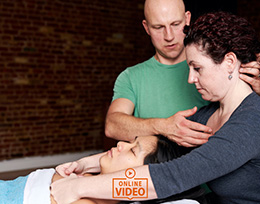Give a Great Massage Again
Refresh. Reinvent. Reignite Your Practice.
Massage therapy is a healing art — but even the most dedicated therapists can lose their spark. Maybe your sessions feel repetitive. Maybe you're noticing more fatigue or strain in your body. Or maybe you just want to feel excited about your work again.
The "Give a Great Massage Again" online course is your reset button.
You'll learn practical, powerful strategies to prevent burnout, restore confidence, and breathe new life into every massage you give.
Why This Course Matters
Too many massage therapists slip into routine without even realizing it. The result?
- Sessions that feel stale instead of inspired
- Physical strain that shortens careers
- Clients who don't feel truly engaged
This course helps you break free from repetition and return to the essence of massage — presence, connection, and effectiveness.
What You'll Learn
- Discover the #1 secret to preventing burnout and extending your massage career through mindful awareness.
- Why slowing down your strokes can speed up results for both you and your clients.
- The surprising benefits of using less oil — and how it deepens connection and effectiveness.
- Stop hurting your own body: learn how to stabilize your joints with ease instead of strain.
- "Pour" don't push: master the art of using body weight rather than muscle force.
- Tune in to yourself while tuning in to your client — a powerful shift that transforms every session.
- 30+ powerful techniques, one integrated flow: confidently deliver a full-body therapeutic massage.
- Timing is everything: adapt your massage to give clients both the broad relaxation they want and the focused work they need.
- Unlock the nervous system connection: understand how your touch influences both the musculoskeletal and autonomic systems.
- Lifting vs. pressing strokes: why "scooping" can create profound release most therapists overlook.
- Facilitate change, don't force it — and watch your results multiply.
- Avoid costly mistakes: know the cautions and contraindications for each technique so you can work safely with confidence.
Who This Course Is For
This course is designed for
massage therapists of all levels who want to:
- Reignite their passion for massage therapy
- Learn new ways to protect their bodies while giving treatments
- Offer clients a more effective, personalized experience
- Build confidence and creativity in every session
Whether you've been practicing for two years or twenty, this course will help you fall in love with massage again.
Proof It Works
Therapists who've applied these methods report:
- Greater client satisfaction and retention
- Reduced strain and injury
- Renewed excitement for their practice
Ready to Reignite Your Massage Practice?
Massage therapy is not just a job – it's a calling. Don't let routine or burnout steal your passion.


